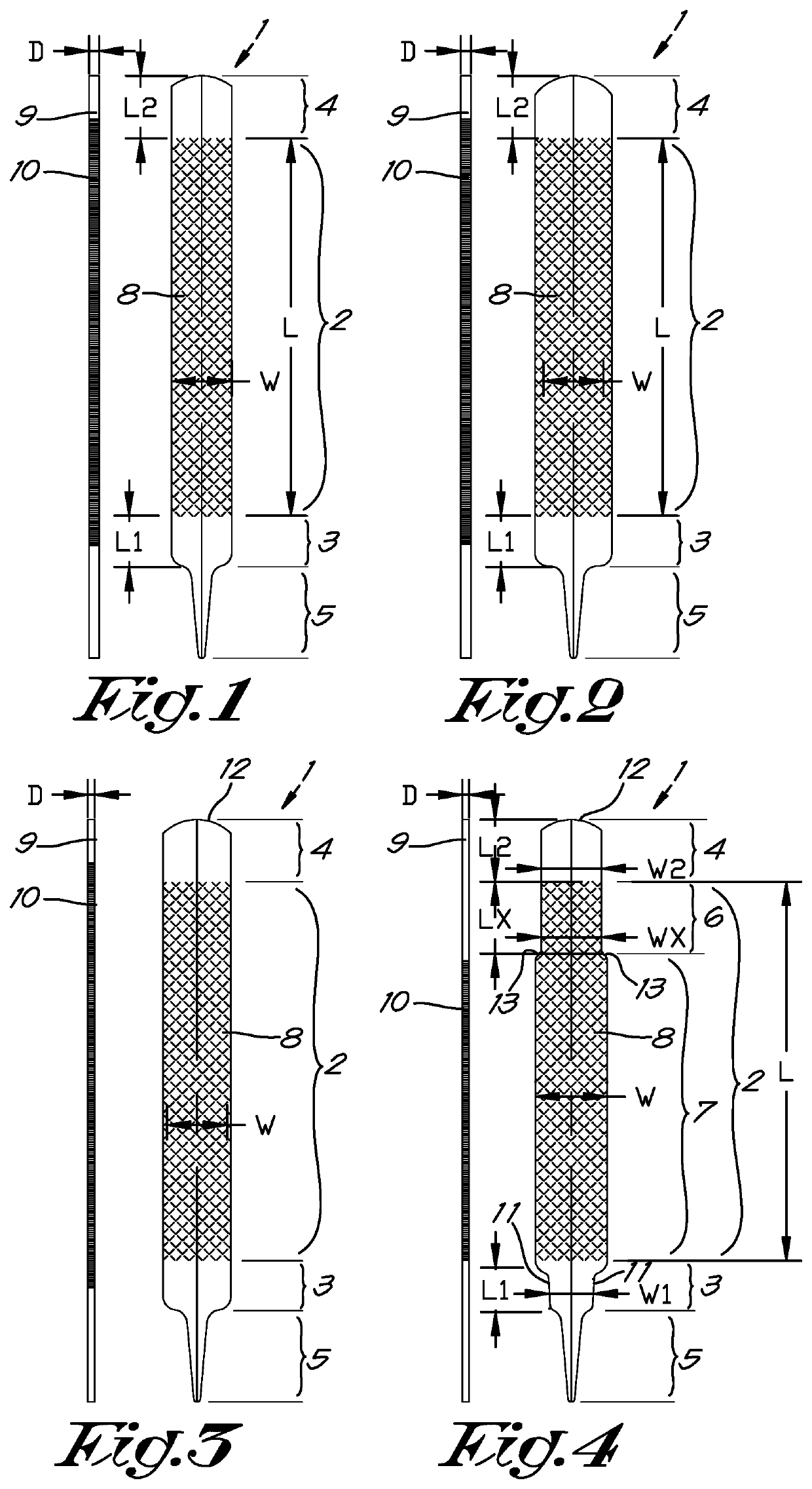Hoof rasp
a technology of hoof rasp and hula hula, which is applied in the field of hoof rasp, can solve the problems of taking some strength to initiate or start the rasping, affecting the use of the hoof, and requiring extra physical strength, so as to achieve a softer initial stroke, improve the use effect, and improve the effect of us
- Summary
- Abstract
- Description
- Claims
- Application Information
AI Technical Summary
Benefits of technology
Problems solved by technology
Method used
Image
Examples
Embodiment Construction
[0039]A traditional hoof rasp 1, as shown for example in FIG. 1, has a width W of 44.5 mm and a total length of 426 mm. The thickness D of the rasp is 5 mm.
[0040]The top view shows a rasping side provided with a rasping section 2 with length L and width W between a rasp-free first and second end 3, 4 over a respective length L1 and L2, whereby the first end 3 tapers into a narrow tang 5 over which a handle is slid. The second end 4 is suitable to hold with the other hand during filing or rasping.
[0041]Teeth 10 are provided over the length L of the rasping section 2 on the side 9 of the rasp 1.
[0042]FIG. 2 shows an extra wide hoof rasp 1 that sells well but has a higher weight. In essence this oblong hoof rasp 1 has the same form as the hoof rasp 1 of FIG. 1. However, the rasp 1 of FIG. 2 is 57 mm wide for the same length and thickness D.
[0043]FIG. 3 shows yet another known wide hoof rasp 1 of 50 mm wide. However, the rasp 1 is thinner than the two previous rasps, with a thickness D ...
PUM
 Login to View More
Login to View More Abstract
Description
Claims
Application Information
 Login to View More
Login to View More - R&D
- Intellectual Property
- Life Sciences
- Materials
- Tech Scout
- Unparalleled Data Quality
- Higher Quality Content
- 60% Fewer Hallucinations
Browse by: Latest US Patents, China's latest patents, Technical Efficacy Thesaurus, Application Domain, Technology Topic, Popular Technical Reports.
© 2025 PatSnap. All rights reserved.Legal|Privacy policy|Modern Slavery Act Transparency Statement|Sitemap|About US| Contact US: help@patsnap.com

